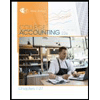
Concept explainers
Prepare journal entries.
Explanation of Solution
Capital stock subscriptions:
Capital stock subscriptions are an agreement where in a buyer makes a contract to buy the shares of stock from a corporation at a particular price.
It refers to the shares that are reacquired by the corporation that are already issued to the stockholders, but reacquisition does not signify retirement.
Journal entry is a set of economic events which can be measured in monetary terms. These are recorded chronologically and systematically.
Accounting rules for Journal entries:
- To record increase balance of account: Debit assets, expenses, losses and credit liabilities, capital, revenue and gains.
- To record decrease balance of account: Credit assets, expenses, losses and debit liabilities, capital, revenue and gains.
Record the journal entry:
| Date | Account Titles and Explanation |
Debit (Amount in $) |
Credit (Amount in $) |
| June 30 | Organization Expenses (1) | 14,900 | |
| Cash | 14,900 | ||
| (To record corporate organization costs) |
Table (1)
- Organization expenses are component of
stockholders’ equity and it is decreased. Therefore, debit organization expenses account by $14,900. - Cash is an asset and it is decreased. Therefore, credit cash account by $14,900.
| Date | Account Titles and Explanation |
Debit (Amount in $) |
Credit (Amount in $) |
| July 15 | Cash | 82,000 | |
| Common Stock | 80,000 | ||
| Paid-In Capital in Excess of Par— Common Stock (2) | 2,000 | ||
| (To record the stock issued at premium) |
Table (2)
- Cash is an asset and it is increased. Therefore debit cash account by $82,000.
- Common stock is a component of stockholders’ equity and it is increased. Therefore, credit common stock account by $80,000.
- Paid-In Capital in Excess of Par— Common Stock is a component of stockholders equity and it is increased. Therefore credit paid-In Capital in Excess of Par— Common Stock account by $2,000.
| Date | Account Titles and Explanation |
Debit (Amount in $) |
Credit (Amount in $) |
| August 1 | Common Stock Subscriptions Receivable | 101,500 | |
| Common Stock Subscribed | 100,000 | ||
| Paid-In Capital in Excess of Par— Common Stock (3) | 1,500 | ||
| ( To record the subscription received) |
Table (3)
- Common stock subscriptions receivable is a contra stockholders’ equity and it is increased. Therefore debit common stock subscriptions receivable account by $101,500.
- Common stock subscribed is a component of stockholders’ equity and it is increased. Therefore credit common stock subscribed account by $100,000.
- Paid-In Capital in Excess of Par— Common Stock is a component of stockholders’ equity and it is increased. Therefore, credit Paid-In Capital in Excess of Par— Common Stock account by $1,500.
| Date | Account Titles and Explanation |
Debit (Amount in $) |
Credit (Amount in $) |
| August 15 | Building | 104,800 | |
| Common Stock | 100,000 | ||
| Paid-In Capital in Excess of Par— Common Stock (4) | 4,800 | ||
| (To record the stock issued at premium) |
Table (4)
- Building is an asset and it is increased. Therefore, debit truck account by $104,800.
- Common stock is a component of stockholders’ equity and it is increased. Therefore, credit common stock account by $100,000.
- Paid-In Capital in Excess of Par— Common Stock is a component of stockholders’ equity and it is increased. Therefore, credit Paid-In Capital in Excess of Par— Common Stock account by $4,800.
| Date | Account Titles and Explanation |
Debit (Amount in $) |
Credit (Amount in $) |
| August 31 | Cash | 51,500 | |
| Common Stock Subscriptions Receivable | 51,500 | ||
| ( To record the payment of subscription) |
Table (5)
- Cash is an asset and it is increased. Therefore debit cash account by $51,500.
- Common stock subscriptions receivable is a contra stockholders’ equity and it is decreased. Therefore credit common stock subscriptions receivable account by $51,500.
| Date | Account Titles and Explanation |
Debit (Amount in $) |
Credit (Amount in $) |
| September 3 | Common Treasury Stock | 11,000 | |
| Cash | 11,000 | ||
| (To record the purchase of treasury stock) |
Table (6)
- Common treasury stock is a contra-stockholders’ equity and it is increased. Therefore, debit common treasury stock account by $11,000.
- Cash is an asset and it is decreased. Therefore, credit cash account by $11,000.
| Date | Account Titles and Explanation |
Debit (Amount in $) |
Credit (Amount in $) |
| September 18 | Cash | 50,000 | |
| Common Stock Subscriptions Receivable | 50,000 | ||
| ( To record the payment of subscription) |
Table (7)
- Cash is an asset and it is increased. Therefore debit cash account by $50,000.
- Common stock subscriptions receivables are a component of stockholders’ equity and it is increased. Therefore credit common stock subscriptions receivable account by $50,000.
Note: In this case, out of $101,500 subscription receivables for common stock, $51,500 is received previously and the final payment of $50,000
| Date | Account Titles and Explanation |
Debit (Amount in $) |
Credit (Amount in $) |
| September 18 | Common Stock Subscribed | 100,000 | |
| Common Stock | 100,000 | ||
| ( To record issuance of common stock) |
Table (8)
- Common stock subscribed is a component of stockholders’ equity and it is decreased. Therefore, debit common stock subscribed account by $100,000.
- Common stock is a component of stockholders’ equity and it is increased. Therefore, credit common stock account by $100,000.
Note: If the stock subscriptions are fully paid, the stock is issued by the corporation. Now the common stock subscribed account is debited and common stock is credited for the par amount of $100,000
| Date | Account Titles and Explanation |
Debit (Amount in $) |
Credit (Amount in $) |
| September 30 | Cash | 5,750 | |
| Common Treasury Stock | 5, 500 | ||
| Paid-In Capital from Sale of Treasury Stock (5) | 250 | ||
| (To record sale of treasury stock) |
Table (9)
- Cash is an asset and it is increased. Therefore debit cash account by $5,750.
- Common treasury stock is a contra-stockholders’ equity and it is decreased. Therefore, credit common treasury stock account by $5,500.
- Paid-In Capital from Sale of Treasury Stock is a component of stockholders’ equity and it is increased. Therefore, credit Paid-In Capital from Sale of Treasury Stock account by $250.
Working note:
(1) Calculate the organization expenses:
(2) Calculate Paid-In Capital in Excess of Par— Common Stock:
(3) Calculate Paid-In Capital in Excess of Par— Common Stock:
(4) Calculate Paid-In Capital in Excess of Par— Common Stock:
(5) Calculate Paid-In Capital from Sale of Treasury Stock:
Want to see more full solutions like this?
Chapter 20 Solutions
Bundle: College Accounting, Chapters 1-27, Loose-Leaf Version, 22nd + CengageNOWv2, 2 terms Printed Access Card
- The difference between the balance in a company's cash account and its bank statement is documented in the __________ of the bank statement.arrow_forwardLarge corporations should report revenues on their income statements when the __________. Cash Is Received Revenues Are Earnedarrow_forwardPLEASE HELP WITH THIS PROBLEMarrow_forward
- The KLM Medical Clinic has two auxiliary departments: the Building Maintenance Department and the Energy Production Department as well as three main production departments: the Department of Paediatrics, the Department of Internal Medicine and the Department of Surgery. The CLM allocates the cost of the building maintenance department based on the area occupied by the departments in square meters and the cost of the energy department based on the days of hospitalization of patients. No distinction is made between variable and fixed cost elements. The budgeted operating figures for the previous year were as follows: Auxiliary sections Main production departments Building maintenance Energy production Pediatrics Department of Internal Medicine Surgical Estimated cost before allocation 18.000,00 8.000,00 80.000,00 50.000,00 90.000,00 Area (in sq.m) 1.000,00 4.000,00 6.000,00 18.000,00 12.000,00 Patient Hospitalization…arrow_forwardwhat is financial accounting? explain its parts and all things.arrow_forwardSystematic relationship quarrow_forward
- 4. ABG produces and sells a single product at the price of 20 euros. During its first year of operation (20X7), the company had no initial stocks. The production cost of a product unit is as follows: Variable production cost of 8 euros per unit. Fixed production cost 9,600 euros. Also, the company has fixed sales expenses of 5,400 euros. In the first year of operation, the company had budgeted that it would produce and sell 3,200 units of product. In fact, during the period production and sales amounted to 3,200 units of product. Requested: To calculate the operating result of the company for the first year of its operation using absorption and marginal costing. Calculate the operating result of the company for the first year of its operation using absorption and marginal costing, assuming that sales for the period amounted to 2,700 units and 500 units remained as final inventory. What is the value of the final inventory of stocks with both costing techniques in this case?arrow_forwardHello experts solve this qnarrow_forwardPlease help me draw a flowchart for the breakfast drive-through scenarios.arrow_forward
 College Accounting, Chapters 1-27 (New in Account...AccountingISBN:9781305666160Author:James A. Heintz, Robert W. ParryPublisher:Cengage Learning
College Accounting, Chapters 1-27 (New in Account...AccountingISBN:9781305666160Author:James A. Heintz, Robert W. ParryPublisher:Cengage Learning Financial And Managerial AccountingAccountingISBN:9781337902663Author:WARREN, Carl S.Publisher:Cengage Learning,
Financial And Managerial AccountingAccountingISBN:9781337902663Author:WARREN, Carl S.Publisher:Cengage Learning,- Century 21 Accounting Multicolumn JournalAccountingISBN:9781337679503Author:GilbertsonPublisher:Cengage
 Managerial Accounting: The Cornerstone of Busines...AccountingISBN:9781337115773Author:Maryanne M. Mowen, Don R. Hansen, Dan L. HeitgerPublisher:Cengage Learning
Managerial Accounting: The Cornerstone of Busines...AccountingISBN:9781337115773Author:Maryanne M. Mowen, Don R. Hansen, Dan L. HeitgerPublisher:Cengage Learning Intermediate Accounting: Reporting And AnalysisAccountingISBN:9781337788281Author:James M. Wahlen, Jefferson P. Jones, Donald PagachPublisher:Cengage Learning
Intermediate Accounting: Reporting And AnalysisAccountingISBN:9781337788281Author:James M. Wahlen, Jefferson P. Jones, Donald PagachPublisher:Cengage Learning





